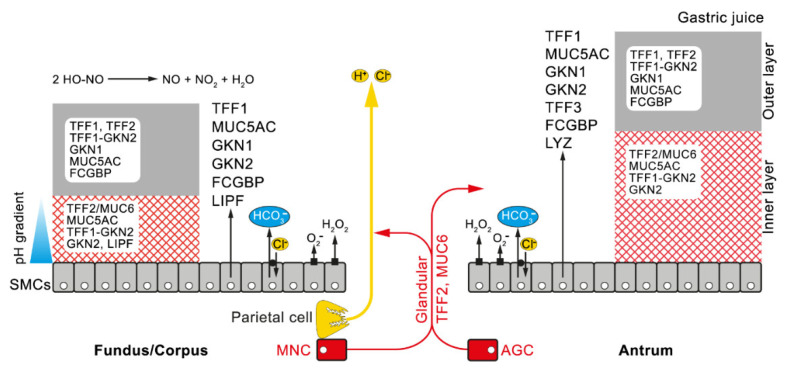Figure 2.
Model of the gastric mucus–bicarbonate barrier in the fundus/corpus and the antrum, respectively. The gastric mucus consists of an outer and an inner layer and originates from different cell populations, i.e., surface mucous cells (SMCs) and glandular cells (fundic mucous neck cells (MNCs) and antral gland cells (AGCs); shown in red). The SMCs in the fundus and corpus differ somewhat and they originate from different stem cells (review: [130]). Both SMC types synthesize TFF1, the mucin MUC5AC, and the gastrokines GKN1, and GKN2, whereas the fundic SMCs additionally secrete gastric lipase (LIPF), and the antral SMCs, lysozyme (LYZ), TFF3, and the major portion of Ig Fc binding protein (FCGBP) [117]. The MNCs and AGCs secrete TFF2 and the mucin MUC6 and the TFF2/MUC6 complex are expected to form the rather insoluble matrix of the inner layer. Further components of the inner layer are MUC5AC and probably TFF1–GKN2 and GKN2. The very hydrophobic LIPF is expected to be a component of the inner fundic mucus layer [117]. SMCs also secrete bicarbonate (HCO3−; shown in blue) in exchange with Cl− creating a pH gradient along the inner layer. The dual oxidase (DUOX) in SMCs and the NOX enzymes generate H2O2 and O2−, respectively, at the apical surface, restricting microbial colonization (innate immune defense). The formation of NO in the gastric juice by the disproportionation of HO-NO is also shown.

